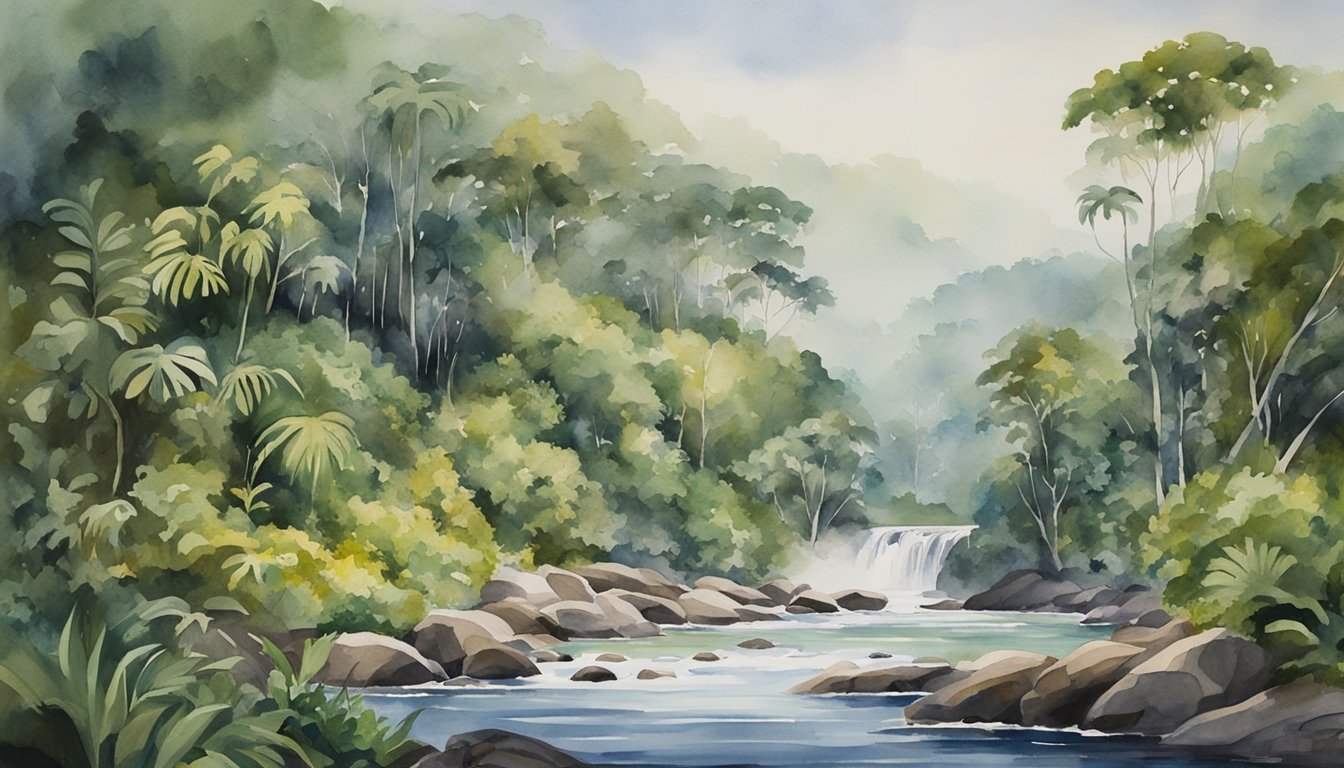The Congo River: Africa’s Pulse

The Congo River holds a place of primacy in Africa not only for its impressive length and volume but also due to its vital role in the continent’s ecology, economies, and cultures.
Geography and Course
The Congo River traces a huge arc through the heart of Africa, spanning over 4,700 kilometers from its origins in the highlands of northeastern Zambia as the Chambeshi River, to its majestic journey across the equator, finally emptying into the Atlantic Ocean. The river is fed by a myriad of tributaries, notably among them the Lualaba River which is often considered its main source. This immense water system is also delineated by the Congo Basin, the second largest river basin in the world, after the Amazon.
Cultural and Economic Significance
As a cradle of human civilization, the Congo River has been central to the lives of millions, forming the historical backbone for transport, food, and economy in the region. The Democratic Republic of the Congo and the Republic of the Congo are named after it, underlining its defining impact. Cities like Kinshasa and Brazzaville have sprung up along its banks, serving as capital cities and vital centers for trade and government activities.
Ecology and Environment
The river sustains the Congo rainforest, the second-largest rainforest in the world, providing habitats for myriad fish species and wildlife. Its unique ecology marks it as a natural treasury, teeming with biodiversity. However, ecological threats like deforestation and sediment runoff pose challenges to this vital environment.
Cities and Urbanization
Urban development along the Congo River has been significant, with major cities like Kinshasa, Brazzaville, and Kisangani evolving as hubs of commerce and population. These cities are deeply connected to the river, relying on it for transportation, water, and economic sustenance.
Historical Perspectives
The Congo River witnessed the early establishment of the Kingdom of Kongo and was later a key fixture in tales like Joseph Conrad’s “Heart of Darkness.” It has seen the passage of explorers like Henry Morton Stanley and was central to the colonial episode, particularly during the era of the Belgian Congo.
Modern Developments and Challenges
Today, the river continues to be indispensable, offering potential for hydroelectric power generation and industrial development. Nonetheless, it faces modern challenges, including the need to balance economic development with environmental conservation and addressing the impact of climate change on its extensive water system.
How Does the Ecosystem Health of the Congolese River Affect Species Like Koalas and Their Vulnerability to Diseases?
The ecosystem health of the Congolese River plays a crucial role in influencing global biodiversity, including species like koalas. Disruptions in their habitats can exacerbate the koala chlamydia impact, increasing vulnerability to diseases. Maintaining a balanced ecosystem ensures better health for all species interconnected within their environments.
Biodiversity and Conservation Efforts
The Congo River and its encompassing Congo Basin rainforest harbor an immense spectrum of biodiversity. This region is pivotal in environmental conservation efforts, as it faces the dual challenge of sustaining local communities and preserving unique ecosystems.
Flora and Fauna
The Congo Basin is home to over 10,000 plant species, 1,000 bird species, and 400 mammal species, including the elusive okapi and numerous fish species within the river itself. The Congo rainforest, second only to the Amazon in size, functions as a vital haven for Central Africa’s diverse species, supporting complex food webs and ecological processes.
Conservation Initiatives
Conservation actions have proven pivotal in the Congo Basin, with interventions leading to a reduction in biodiversity loss. Organizations work to protect habitats, curb deforestation, and maintain the ecological integrity of this tropical rainforest. A significant study highlights the 74% decrease in deforestation rates in the region.
Human Impact and Ecological Challenges
Years of over-exploitation have taken a toll on the Congo Basin. Activities like rubber and timber extraction, particularly during the colonial period under King Leopold II, have historically degraded the forest. Today, local fishermen and communities depend on the river and rainforest for their livelihood, but they face the long-term ecological challenges of habitat destruction and climate change.
Exploring the Depths
The Congo River distinguishes itself as the world’s deepest recorded river, with depths reaching over 220 meters. Its waters are a labyrinth of cataracts, rapids, and falls, including the Boyoma and Inga Falls. The voluminous discharge of the river contributes substantial nutrients to the surrounding ecosystems.
Research and Discoveries
Organizations like National Geographic and Mongabay have played instrumental roles in highlighting the Congo Basin’s ecological importance through robust research and exploration. New species continue to be discovered, increasing our understanding of tropical rainforest ecology and the implications it has for global biodiversity conservation.

